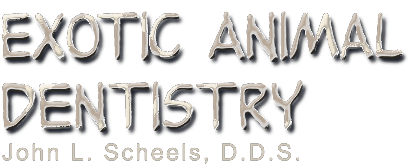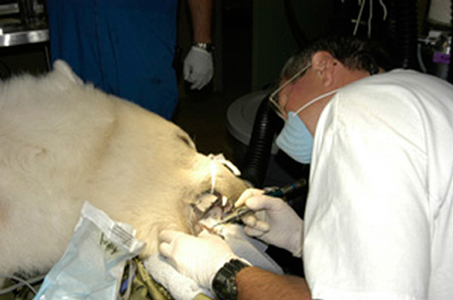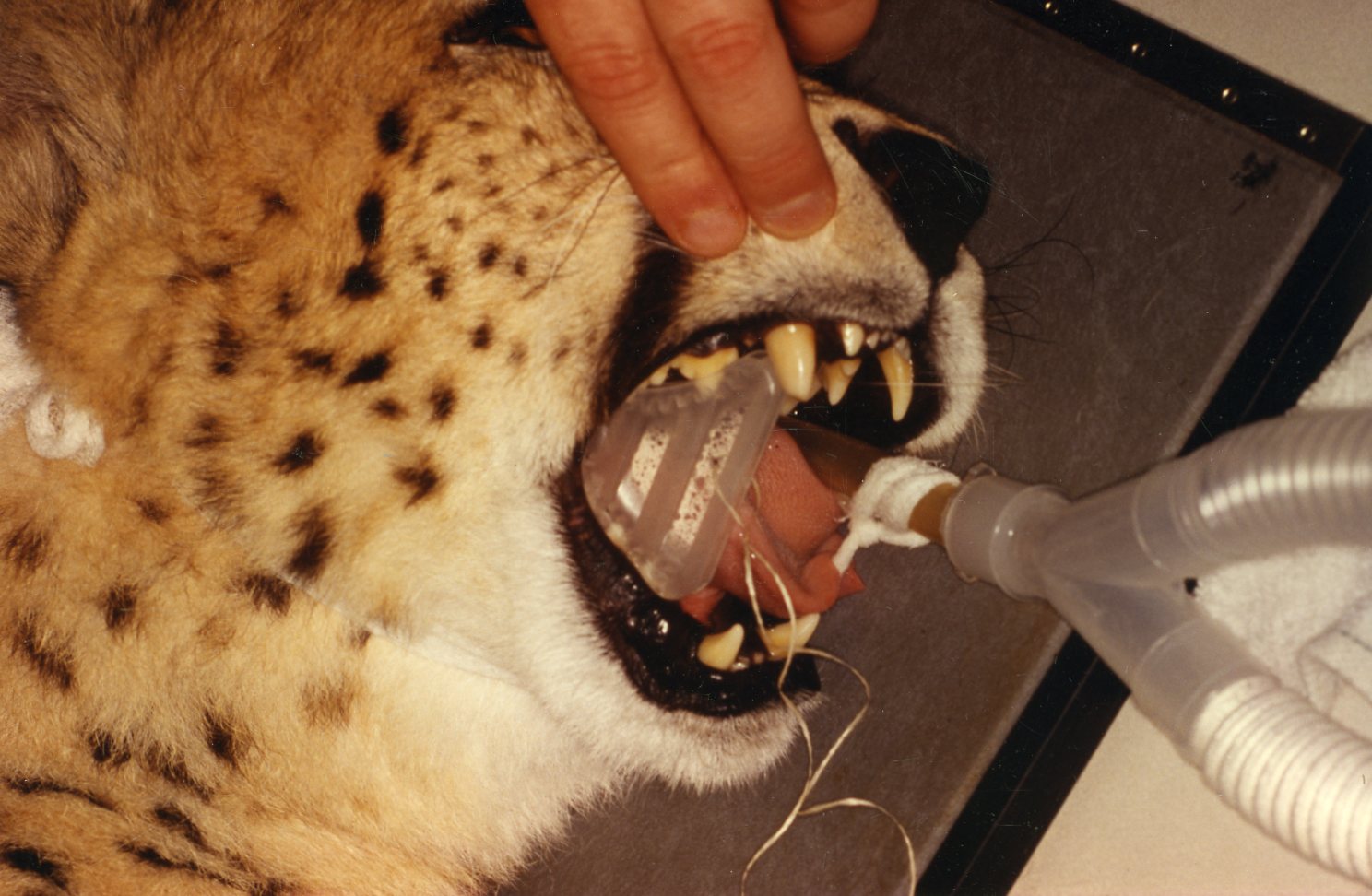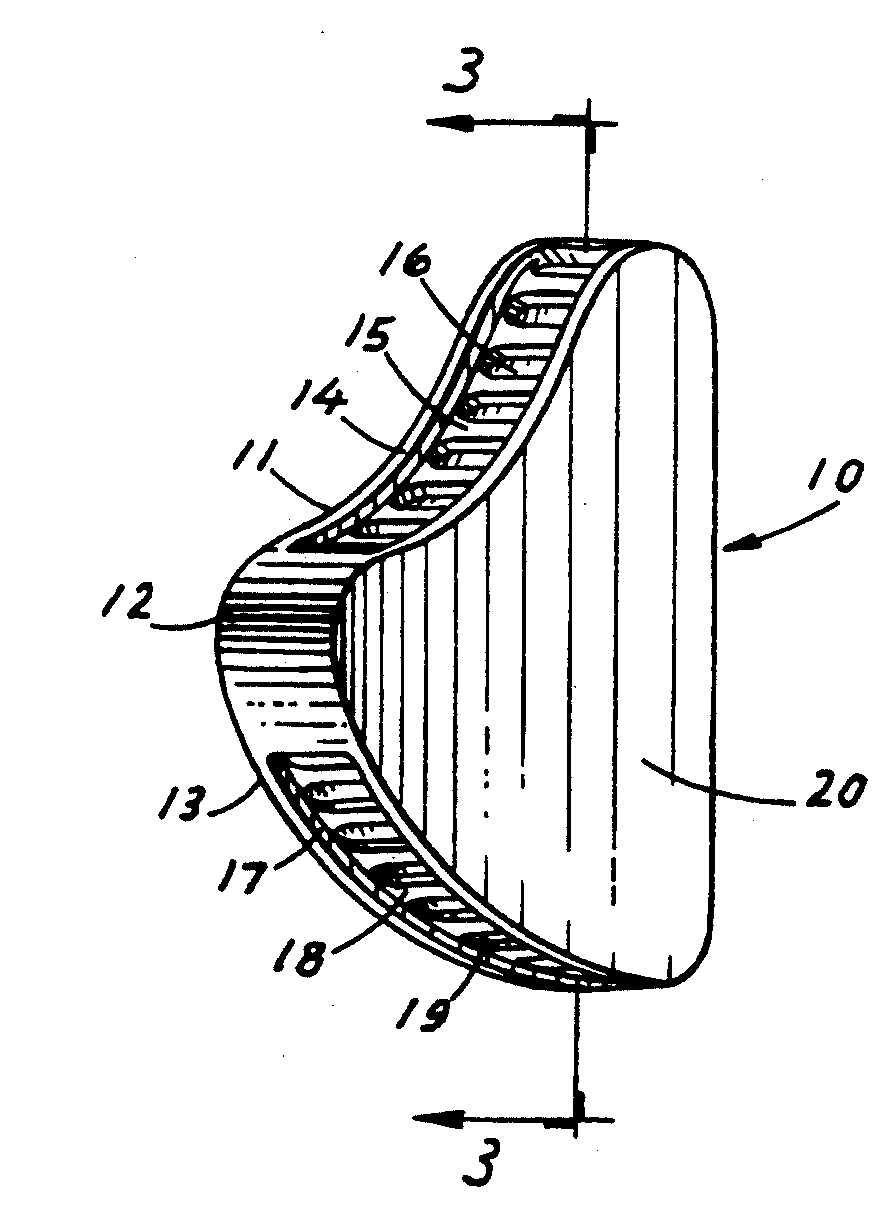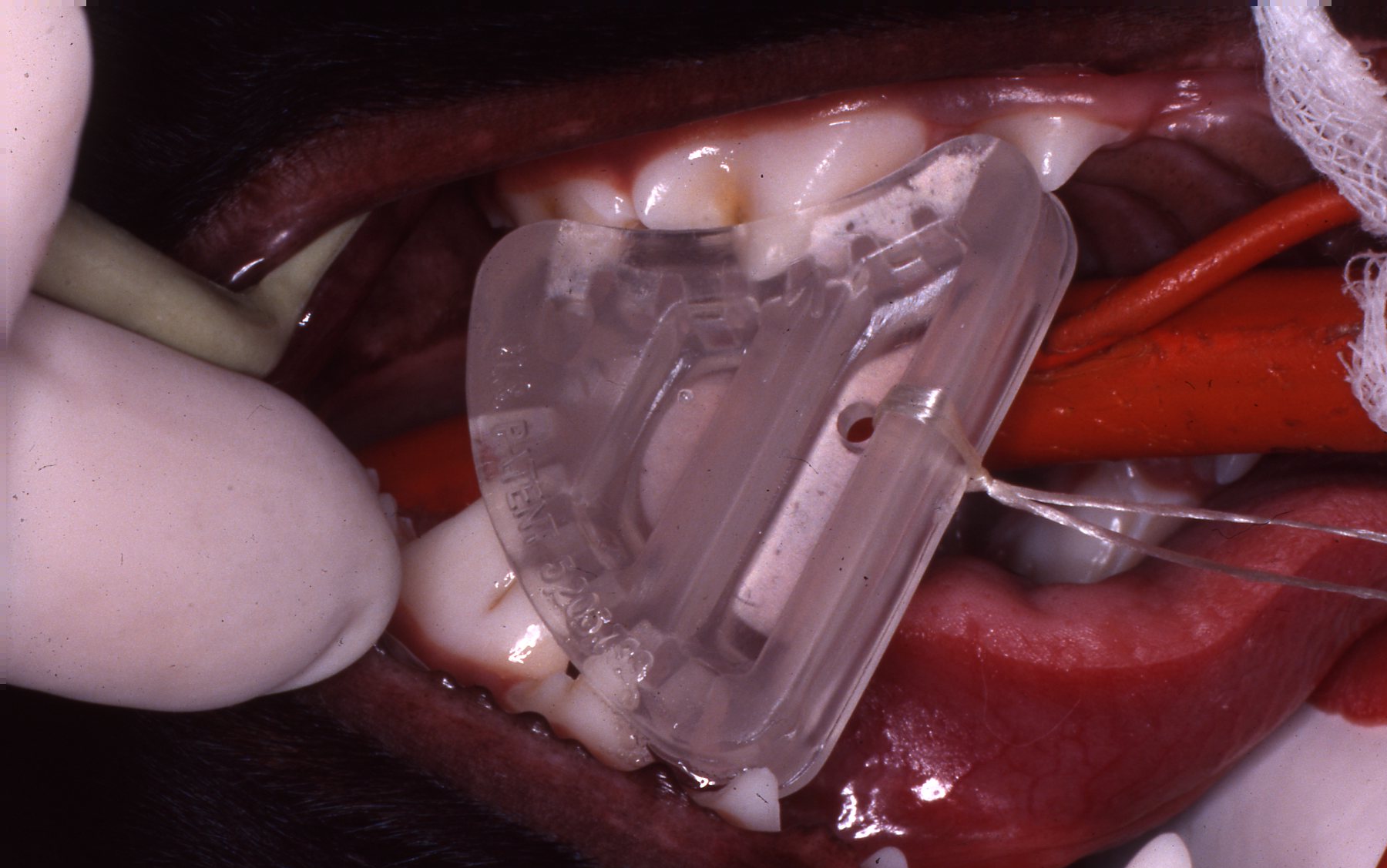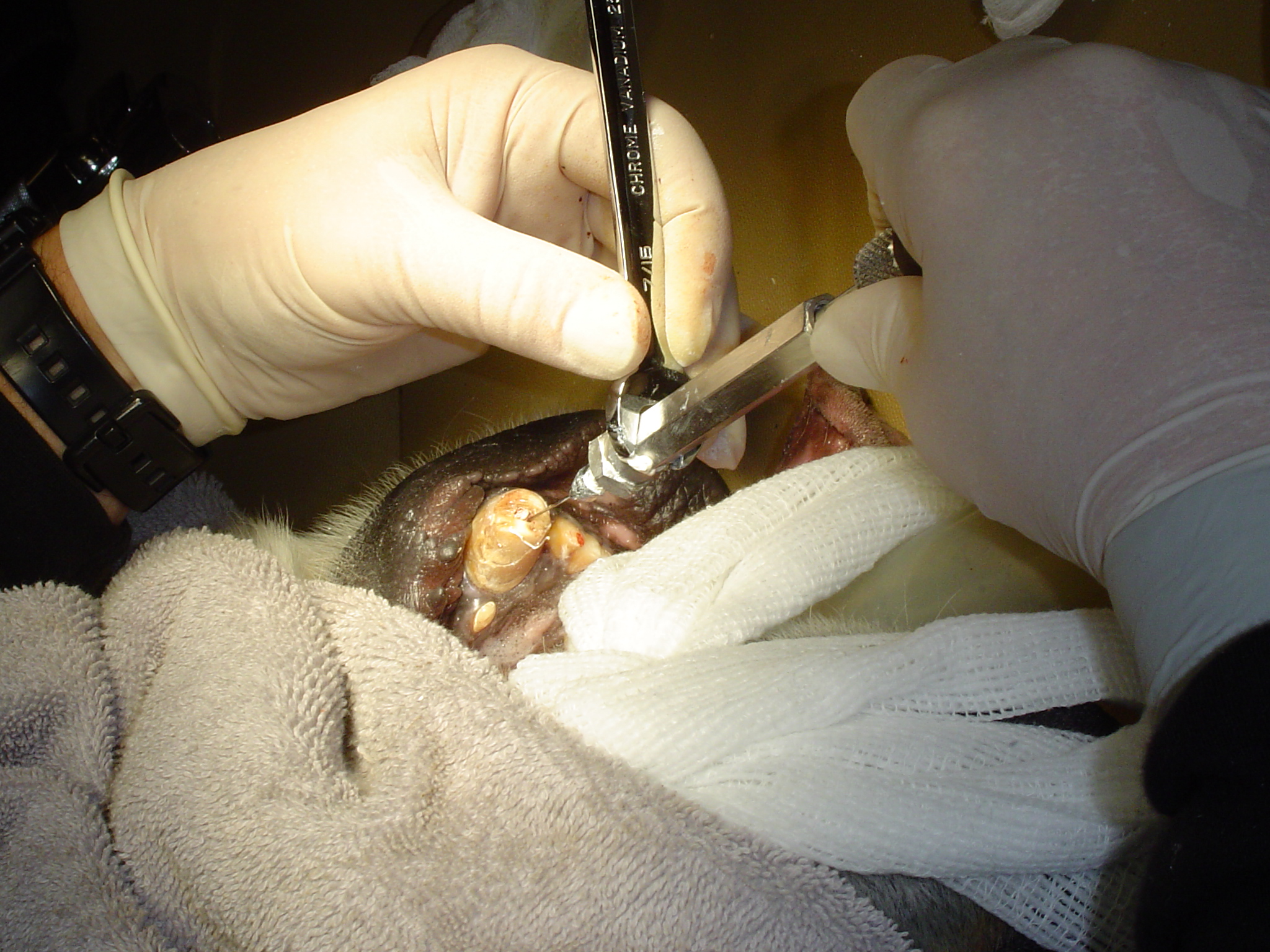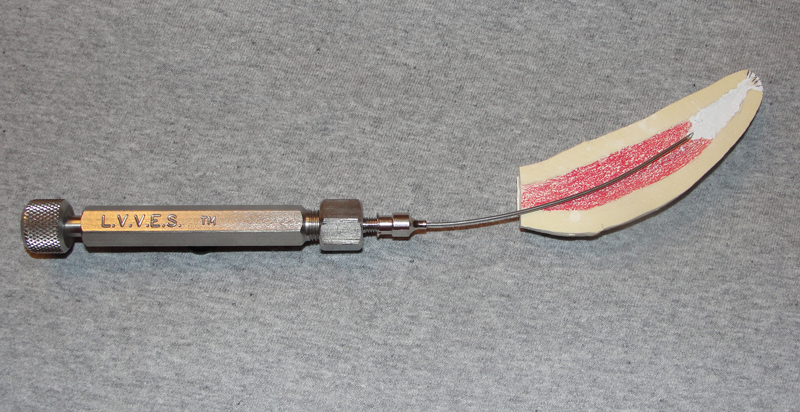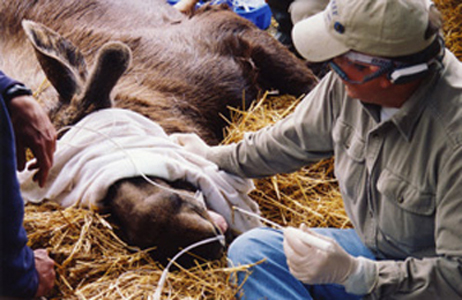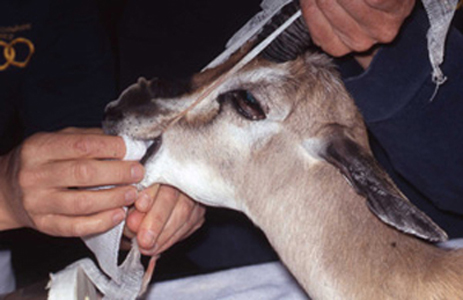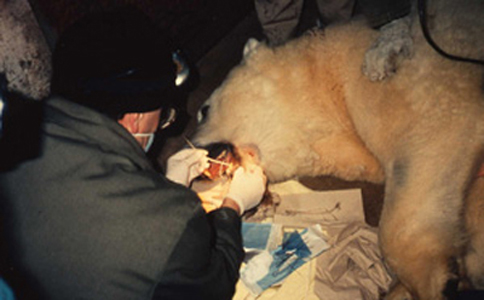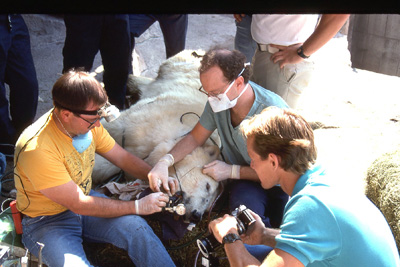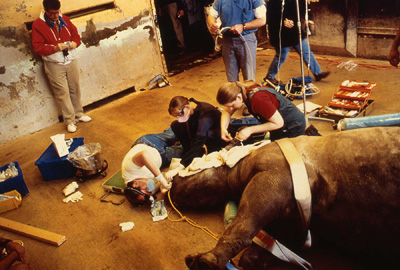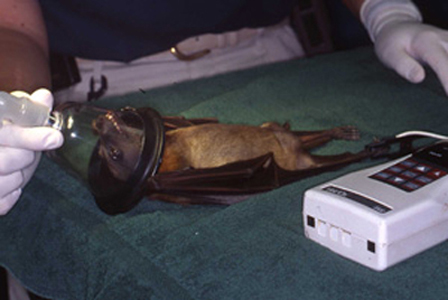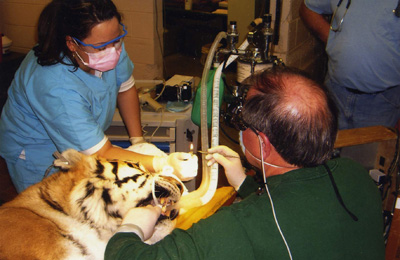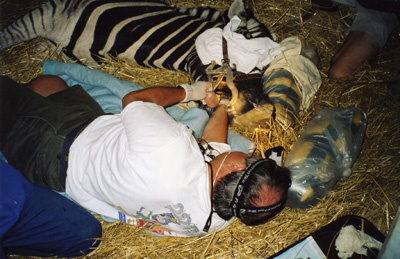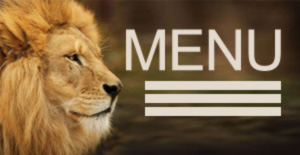
Home
Mission Statement
The purpose of this website is to share the experience and knowledge accumulated while serving as a zoo dental consultant. I have been very fortunate to have had the opportunity to treat over 90 species primarily at the Milwaukee County Zoo since 1981. I have also worked with numerous other zoos and private veterinary practitioners. These efforts have provided a wealth of experience that has revealed patterns of pathoses and effective treatments.
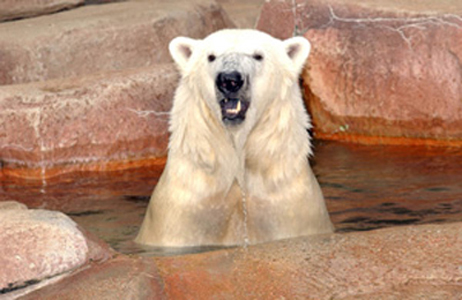 Haley, Brookfield ZooPhoto by James Schulz
Haley, Brookfield ZooPhoto by James Schulz
I correspond with veterinarians and zoo dental consultants regarding treatment regularly. The questions and case types are often repetitive. It has been clear to me for some time that the information necessary to facilitate optimal treatment of exotic animal dental cases in the zoo setting is still not that readily available. Resources do exist to learn how to approach these cases, but finding them can still be a challenge. Zoo dentistry presents unique challenges involving determining whether an oral or dental problem exists, diagnosis, treatment planning, comprehensive treatment, often times in less than ideal situations and limited follow up.
Many zoo veterinarians enlist human dentists as dental consultants. Until the veterinary dentistry specialty developed, this was their only choice other than to learn dentistry themselves. Some do that to a limited degree. Veterinary dentistry has become a specialty since the 1990s. There are still less than 200 Board Certified veterinary dental specialists worldwide.
Veterinary dentists are primarily expert at treating carnivores, dogs and cats. They also commonly treat other "exotic" pets such as small monkeys, guinea pigs, and ferrets etc. The range of species in zoos still presents many additional groups of animals. And there just aren't enough veterinary dentists to serve all the zoos and other exotic animal entities yet.
In 1986 I was invited to develop an elective dentistry course at the new University of Wisconsin School of Veterinary Medicine. Along with veterinary surgeon Dr. Paul Howard, we developed a course and conducted continuing education classes for several years. Our efforts were greatly enhanced when Dr. Bill Gengler came on board and eventually took it over, when I left after 12 years. It has developed into a full dental curriculum and a staff of two boarded veterinary dentists with a residency program.
For ten years I worked with equine veterinarian, Dr. Jo Randolph. We broke new ground treating equine dental cases. We used dental handpieces to facilitate dental restorations, endodontics and oral and facial surgery. We used cadaver heads to learn and plan cases on horses and llamas. Some of these cases were presented at the AVDS meeting in 1994. Currently equine dentists have elevated the field through the utilization of the most sophisticated technology to understand equine dental anatomy and physiology.
I am pleased to see the impressive growth of comprehensive equine dentistry in recent years. It has become the focus of many dedicated equine veterinarians. The equine dentition anatomy and physiology has become much more thoroughly understood and addressed. Many new treatment modalities are being developed based on this increasing depth of understanding. Alongside this knowledge, specialized equipment has been developed to optimize treatment outcomes.
My intention is to complement the excellent, expanding literature of veterinary dentistry regarding the specific nature of treating captive exotics as a zoo dental consultant. I intend to share some general insights and specific treatment details, gleaned from hundreds of zoo cases. If this is considered of value by zoo veterinarians and their dental consultants, my next intention is to invite contributions from others experienced in this field.
Please note: pictures and series of pictures are chosen because they are the most complete in illustrating procedure steps. We are often at the mercy of someone else taking photos for us during a procedure. Often no one is available to take them, opportunities are missed, or photos do not turn out well. We make an effort to give credit to whoever took the pictures if we have that information.
Acknowledgements
I would not have been able to serve as the dental consultant at Milwaukee County Zoo and have the opportunity to aid in the health care of so many precious exotic animals without the trust and encouragement of the zoo veterinarians and administration. Dr. Gilbert Boese was the Milwaukee County Zoo's director from 1979 to 1990. In 1981 he hired Dr. Bruce Beehler, the zoo's first full time veterinarian, who developed a comprehensive veterinary medical program. When I offered to provide dental care for the zoo animals, in 1981, Dr. Beehler allowed me to apply what I knew about human dentistry to treat the zoo animals. Together we gathered what little academic information was available. In 1986 we co-chaired the first ever zoo dentistry conference, attracting over 100 zoo veterinarians and dentists from the US and Europe. That meeting was followed by additional gatherings in Philadelphia in 1989, and Calgary in 1991, associated with the AAZV. In 2002 we hosted another zoo dentistry meeting in Milwaukee, again associated with the AAZV.
In 1983 I extracted an abscessed maxillary second molar from Tanga, a very ill silverback lowland gorilla, sectioning it with a belt drive slow speed lab handpiece. Tanga recovered promptly. Soon after that Drs. Boese and Beehler met with me and asked what equipment could be acquired to improve the delivery of comprehensive dental care. Dr. Boese later became the President of the Zoological Society of Milwaukee. The Society, currently led by Dr. Bert Davis, supports the veterinary staff and has generously supported my efforts at the zoo, providing funds for equipment etc.
Mr. Charles "Chuck" Wikenhauser has been the zoo's Director from 1990 to present. He has continued to hire and manage supremely capable and dedicated veterinary and curatorial professionals. The zoo veterinarians that I have worked with, in particular Drs. Bruce Beehler, Andrew Teare, Victoria Clyde and Roberta Wallace, have been inspirational colleagues.
And most importantly, I acknowledge my wife, Betty, who has tolerated me spending hundreds of Thursday and Saturday mornings on my "days off" to treat the zoo patients. Trained as a former surgical technician, she ably assisted me in several early major zoo oral surgical cases.
About John L. Scheels, DDS
For over 30 years, Dr. Scheels has been the Zoo's dentist at the Milwaukee County Zoo. He has performed dental procedures on more than 90 species of animals.
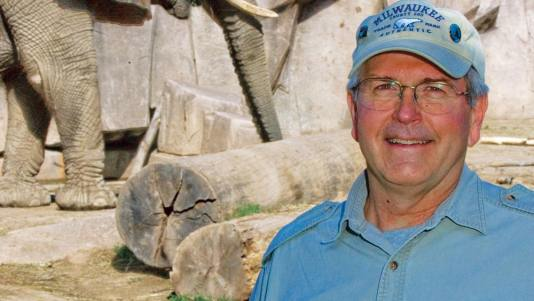
Dr. Scheels is a leader in the growing and highly specialized field of exotic animal dentistry. Scheels has a general dental practice in Wauwatosa, Wisconsin.
He organized and co-chaired the first International Zoo/Exotic Animal Dentistry Conference and created the veterinary dentistry program for the University of Wisconsin-Madison School of Veterinary Medicine.
Dr. Scheels majored in zoology at the University of Wisconsin-Milwaukee before coming to Marquette University School of Dentistry. Over 30 years ago, he read a magazine article about a zoo dentist. Intrigued, he volunteered his services at the Milwaukee zoo, and soon found himself in a cage inspecting an orangutan's broken tooth. "The bulk of my time is extracting problematic teeth, but we run the whole gamut of problems," says Scheels, who consults on about 35 cases a year.

